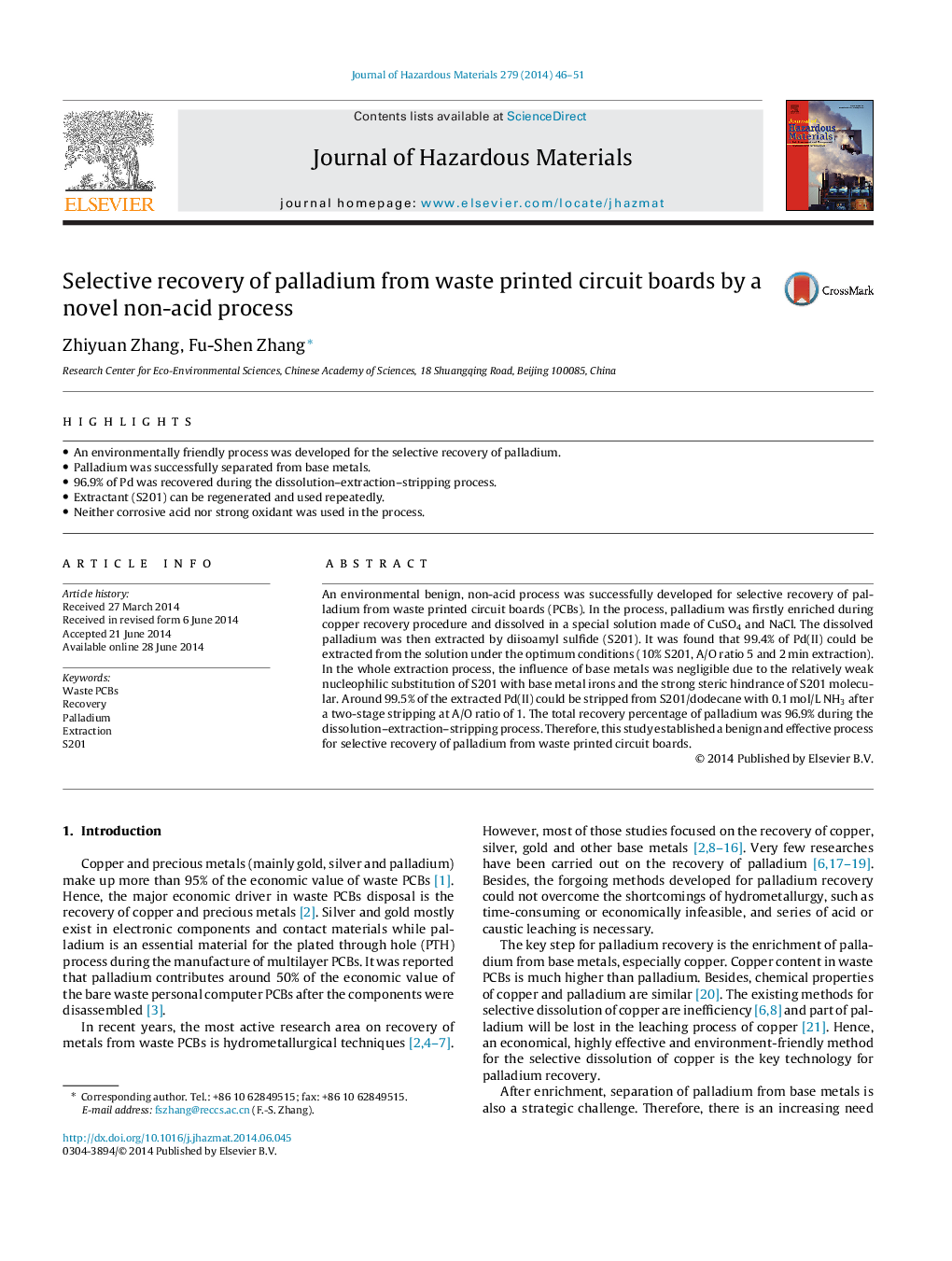| Article ID | Journal | Published Year | Pages | File Type |
|---|---|---|---|---|
| 576581 | Journal of Hazardous Materials | 2014 | 6 Pages |
Abstract
An environmental benign, non-acid process was successfully developed for selective recovery of palladium from waste printed circuit boards (PCBs). In the process, palladium was firstly enriched during copper recovery procedure and dissolved in a special solution made of CuSO4 and NaCl. The dissolved palladium was then extracted by diisoamyl sulfide (S201). It was found that 99.4% of Pd(II) could be extracted from the solution under the optimum conditions (10% S201, A/O ratio 5 and 2Â min extraction). In the whole extraction process, the influence of base metals was negligible due to the relatively weak nucleophilic substitution of S201 with base metal irons and the strong steric hindrance of S201 molecular. Around 99.5% of the extracted Pd(II) could be stripped from S201/dodecane with 0.1Â mol/L NH3 after a two-stage stripping at A/O ratio of 1. The total recovery percentage of palladium was 96.9% during the dissolution-extraction-stripping process. Therefore, this study established a benign and effective process for selective recovery of palladium from waste printed circuit boards.
Related Topics
Physical Sciences and Engineering
Chemical Engineering
Chemical Health and Safety
Authors
Zhiyuan Zhang, Fu-Shen Zhang,
